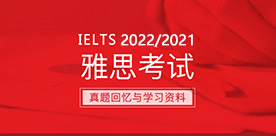雅思劍5Test2閱讀譯文Passage1-BAKELITE The birth of modern plastics
2017/5/14 16:46:58來(lái)源:新航道作者:新航道
摘要:?很多雅思考生為了提高雅思閱讀分?jǐn)?shù),做了很多題目,但成效不大,這時(shí)可以想想是不是備考書籍選擇不當(dāng)造成,建議考生們多多看劍橋雅思真題。上海新航道雅思小編第一時(shí)間給大家?guī)?lái)了雅思劍5Test2閱讀譯文Passage1-BAKELITE The birth of modern plastics。希望可以幫助廣大雅思考生輕松備考雅思。
很多雅思考生為了提高雅思閱讀分?jǐn)?shù),做了很多題目,但成效不大,這時(shí)可以想想是不是備考書籍選擇不當(dāng)造成,建議考生們多多看劍橋雅思真題。上海新航道雅思小編第一時(shí)間給大家?guī)?lái)了雅思劍5Test2閱讀譯文Passage1-BAKELITE The birth of modern plastics。希望可以幫助廣大雅思考生輕松備考雅思。
雅思劍5Test2閱讀譯文Passage1-BAKELITE The birth of modern plastics
酚醛塑料——現(xiàn)代塑料的誕生
In 1907, Leo Hendrick Baekeland, a Belgian scientist working in New York, discovered and patented a revolutionary new synthetic material. His invention, which he named ‘Bakelite,’ was of enormous technological importance, and effectively launched the modern plastics industry.
1907年,比利時(shí)科學(xué)家Leo Hendrick Baekeland在紐約工作時(shí)發(fā)現(xiàn)了一種全新的合成材料,并申請(qǐng)了專利。他將自己的發(fā)明稱作“酚醛塑料”,他的這一發(fā)明在技術(shù)上起到了極其重要的作用,并有效地催生了現(xiàn)代塑料業(yè)。
The term ‘plastic’ comes from the Greek plassein, meaning ‘to mould’. Some plastics are derived from natural sources, some are semi-synthetic (the result of chemical action on a natural substance), and some are entirely synthetic, that is, chemically engineered from the constituents of coal or oil. Some are ‘thermoplastic’, which means that, like candlewax, they melt when heated and can then be reshaped. Others are ‘thermosetting’: like eggs, they cannot revert to their original viscous state, and their shape is thus fixed for ever. Bakelite had the distinction of being the first totally synthetic thermosetting plastic.
“塑料(plastic) ”這一術(shù)語(yǔ)原于希臘詞plassein,意思就是“塑造”。某些塑料源自天然材料,某些塑料是半人工合成塑料,即由天然材料發(fā)生化學(xué)反應(yīng)形成的。還有的塑料是完全由人工合成的,也就是通過(guò)煤或布油的成分發(fā)生化學(xué)反應(yīng)形成的。有些塑料是熱塑性塑料,即像贈(zèng)燭一樣,受熱后形狀可以重塑。有些塑枳隄熱固性塑料,就像雞蛋一樣,受熱后無(wú)法再回到原來(lái)的黏滯狀態(tài),是永久定型的。酚醛塑料是第一種完全由人工合成的熱固性塑料。
The history of today’s plastics begins with the discovery of a series of semi-synthetic thermoplastic materials in the mid-nineteenth century. The impetus behind the development of these early plastics was generated by a number of factors — immense technological progress in the domain of chemistry, coupled with wider cultural changes, and the pragmatic need to find acceptable substitutes for dwindling supplies of ‘luxury’ materials such as tortoiseshell and ivory.
當(dāng)代塑料的歷史源于19世紀(jì)中期對(duì)一系列半人工合成的熱塑材料的發(fā)現(xiàn)。早期研制這些塑料材料有多個(gè)動(dòng)因:化學(xué)領(lǐng)域的巨大的技術(shù)進(jìn)步,文化觀念的巨大轉(zhuǎn)變,以及等找合適的材料代替供應(yīng)量日益減少的奢侈原料(如玳瑁殼和象牙)的實(shí)際需要。
Baekeland’s interest in plastics began in 1885 when, as a young chemistry student in Belgium, he embarked on research into phenolic resins, the group of sticky substances produced when phenol (carbolic acid) combines with an aldehyde (a volatile fluid similar to alcohol). He soon abandoned the subject, however, only returning to it some years later. By 1905 he was a wealthy New Yorker, having recently made his fortune with the invention of a new photographic paper. While Baekeland had been busily amassing dollars, some advances had been made in the development of plastics. The years 1899 and 1900 had seen the patenting of the first semi-synthetic thermosetting material that could be manufactured on an industrial scale. In purely scientific terms, Baekeland’s major contribution to the field is not so much the actual discovery of the material to which he gave his name, but rather the method by which a reaction between phenol and formaldehyde could be controlled, thus making possible its preparation on a commercial basis. On 13 July 1907, Baekeland took out his famous patent describing this preparation, the essential features of which are still in use today.
Baekeland對(duì)塑料的興趣始于1885年,當(dāng)時(shí)他還是比利時(shí)的一個(gè)年輕的化學(xué)專業(yè)學(xué)生。 Baekeland開(kāi)始研究的是酚醛樹(shù)脂。酚醛樹(shù)脂是苯酚(石炭酸)和一種醛(與酒精類似的揮發(fā)性液體)結(jié)合的粘稠狀的產(chǎn)物。不過(guò),他很快就放棄了這一課題,直到多年以后才重新開(kāi)始這一研究。到了1905年,由于當(dāng)時(shí)剛發(fā)明了一種新型照相紙,他賺了些錢,成為了紐約市的一位富人。當(dāng)Baekeland忙著賺錢的時(shí)候,塑料研究方面取得了幾項(xiàng)重大進(jìn)展。1899年至1900 年間,第一種可以投入大規(guī)模工業(yè)生產(chǎn)的半人工合成熱塑材料獲得了專利。從純科學(xué)的角度講,Baelcelmid對(duì)塑料這一領(lǐng)域的貢獻(xiàn)并不在于他發(fā)現(xiàn)了酚醛塑料這種以他名字命名的材料,而是在于控制苯酚和甲醛反應(yīng)的方法,正是這種控制方法使酚醛塑料可以進(jìn)行大規(guī)模的商業(yè)制備。1907年7月13日,Baekeland獲得了描述這一制備過(guò)程的專利,其中主要步驟至今仍在使用。
The original patent outlined a three-stage process, in which phenol and formaldehyde (from wood or coal) were initially combined under vacuum inside a large egg-shaped kettle. The result was a resin known as Novalak which became soluble and malleable when heated. The resin was allowed to cool in shallow trays until it hardened, and then broken up and ground into powder. Other substances were then introduced: including fillers, such as woodflour, asbestos or cotton, which increase strength and moisture resistance, catalysts (substances to speed up the reaction between two chemicals without joining to either) and hexa, a compound of ammonia and formaldehyde which supplied the additional formaldehyde necessary to form a thermosetting resin. This resin was then left to cool and harden, and ground up a second time. The resulting granular powder was raw Bakelite, ready to be made into a vast range of manufactured objects. In the last stage, the heated Bakelite was poured into a hollow mould of the required shape and subjected to extreme heat and pressure, thereby ‘setting’ its form for life.
Baekeland的這個(gè)專利列舉了三個(gè)步驟:首先,苯釀和甲醛(從木材或煤中提取)在真空的卵形瓶中進(jìn)行反應(yīng),生成一種叫Novalak的樹(shù)脂,這種樹(shù)脂可溶且受熱后有延展性。然后使這種樹(shù)脂在淺盤中冷卻、變硬,最后破碎,碾成粉末。接著加入其他的物質(zhì),包括填料,如木屑、石棉或棉花,以增加強(qiáng)度和防潮,還要加入催化劑(加速兩種化學(xué)物質(zhì)的反應(yīng)但自身在反應(yīng)后卻不發(fā)生變化的物質(zhì))和六元化合物(一種有氨和甲醛的化合物,為生成熱塑性樹(shù)脂提供必要的甲醛)。然后將得到的樹(shù)脂再次冷卻,使其變硬,重新碾成粉末。由此形成的顆粒狀粉末就是粗質(zhì)酚醛塑料,可以用來(lái)制造一系列的其他物品。在最后一步,將受熱的酚醛塑料澆進(jìn)所需形狀的中空模具中,施以高溫髙壓,使其永久定型。
The design of Bakelite objects, everything from earrings to television sets, was governed to a large extent by the technical requirements of the molding process. The object could not be designed so that it was locked into the mould and therefore difficult to extract. A common general rule was that objects should taper towards the deepest part of the mould, and if necessary the product was molded in separate pieces. Moulds had to be carefully designed so that the molten Bakelite would flow evenly and completely into the mould. Sharp corners proved impractical and were thus avoided, giving rise to the smooth, ‘streamlined’ style popular in the 1930s. The thickness of the walls of the mould was also crucial: thick walls took longer to cool and harden, a factor which had to be considered by the designer in order to make the most efficient use of machines.
酚醛塑料制成品形狀的設(shè)計(jì),無(wú)論是耳環(huán)還是電視機(jī)外殼,都在很大程度上取決于塑形過(guò)程中的技術(shù)要求。設(shè)計(jì)要避免物品在塑形過(guò)程中卡在模具中取不出來(lái)。一個(gè)常用的規(guī)則就是物品越深人模具的部分應(yīng)越細(xì)。若有必要,則將物品分成幾部分,單獨(dú)塑形。模具的設(shè)計(jì)要十分小心,使熔化的酚醛塑料能平均地全部流人模具中。尖角不實(shí)用,因此要盡量避免,由此也帶來(lái)了20世紀(jì)30年代光滑的流線型形狀的風(fēng)行。模具壁的厚度也很關(guān)鍵。模具壁越厚,冷卻硬化需要的時(shí)間就越長(zhǎng)。為了使(生產(chǎn))機(jī)器能得到高效的使用,模具厚度這個(gè)因素是設(shè)計(jì)者必須加以考慮的。
Baekeland’s invention, although treated with disdain in its early years, went on to enjoy an unparalleled popularity which lasted throughout the first half of the twentieth century. It became the wonder product of the new world of industrials expansion — ‘the material of a thousand uses’. Being both non-porous and heat-resistant, Bakelite kitchen goods were promoted as being germ-free and sterilisable. Electrical manufacturers seized on its insulating properties, and consumers everywhere relished its dazzling array of shades, delighted that they were now, at last, no longer restricted to the wood tones and drab browns of the preplastic era. It then fell from favour again during the 1950s, and was despised and destroyed in vast quantities. Recently, however, it has been experiencing something of a renaissance, with renewed demand for original Bakelite objects in the collectors’ marketplace, and museums, societies and dedicated individuals once again appreciating the style and originality of this innovative material.
盡管起初Baekeland的這一發(fā)明受到人們的鄙視,但后來(lái)卻受到前所未有的歡迎,在20世紀(jì)前半葉一直都很流行。這一發(fā)明成了工業(yè)擴(kuò)張時(shí)期的寵兒,被稱為是“萬(wàn)能材料”。由于能防滲抗熱,用酚醛塑料制成的廚房用品都在宣傳中強(qiáng)調(diào)其無(wú)菌,可消毒的特點(diǎn)。電器制造商利用其絕緣的特性,消費(fèi)者則享受到其鮮艷奪目的色彩,慶幸自己不用再忍受“前塑料時(shí)代”只有木色和棕色的單調(diào)了。到了20世紀(jì)50年代,酚醛塑料又再度失去人們的寵愛(ài),遭到人們的鄙視,被大量銷毀。而最近,酚醛塑料又好像重?zé)松鷻C(jī),收藏品市場(chǎng)上對(duì)原來(lái)用酚醛塑料制成的物品需求又有所增加。博物館、各種社團(tuán)和熱衷于此的個(gè)人收藏者又開(kāi)始重新欣賞起這種創(chuàng)新型材料的風(fēng)格和其新穎別致的特點(diǎn)。
以上就是小編為大家?guī)?lái)關(guān)于《劍橋雅思5真題》閱讀部分供大家閱讀參考,新航道雅思資料頻道將第一時(shí)間為考生發(fā)布最全、最新、最專業(yè)的雅思資訊及雅思考試資料及機(jī)經(jīng).
免費(fèi)獲取資料
熱報(bào)課程
- 雅思課程
| 班級(jí)名稱 | 班號(hào) | 開(kāi)課時(shí)間 | 人數(shù) | 學(xué)費(fèi) | 報(bào)名 |
|---|
免責(zé)聲明
1、如轉(zhuǎn)載本網(wǎng)原創(chuàng)文章,情表明出處
2、本網(wǎng)轉(zhuǎn)載媒體稿件旨在傳播更多有益信息,并不代表同意該觀點(diǎn),本網(wǎng)不承擔(dān)稿件侵權(quán)行為的連帶責(zé)任;
3、如本網(wǎng)轉(zhuǎn)載稿、資料分享涉及版權(quán)等問(wèn)題,請(qǐng)作者見(jiàn)稿后速與新航道聯(lián)系(電話:021-64380066),我們會(huì)第一時(shí)間刪除。
全真模擬測(cè)試
雅思動(dòng)態(tài)

DeepSeekx雅思官方:中國(guó)考生...
制作:每每








